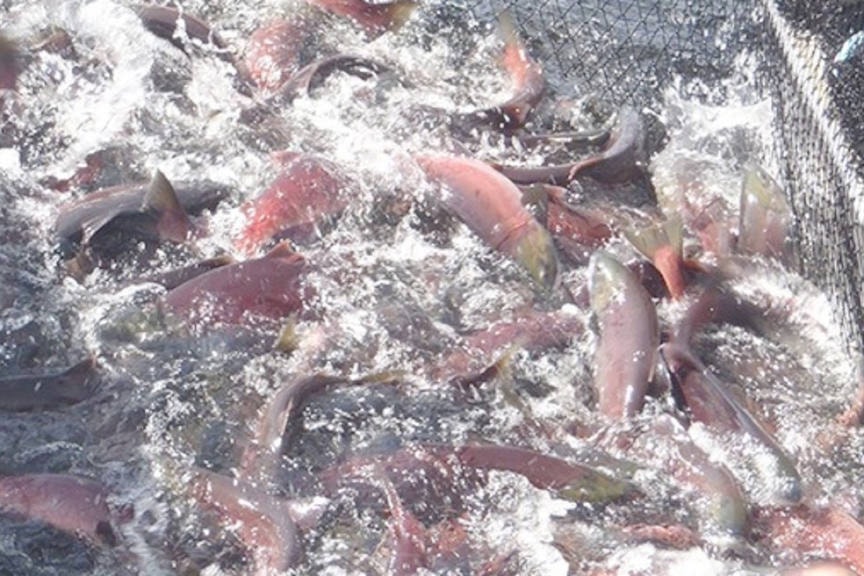The Lake Babine Nation (LBN) has no plans to ban sockeye fishing in its territory for the time being.
Speaking to Lakes District News, Donna MacIntyre, Fisheries Director with LBN, explained that counts of sockeye salmon in the Babine River don’t indicate harvest bans are needed.
“We’ve been watching the numbers very closely. We’ve been working with neighbouring nations and the Department of Fisheries and Oceans (DFO). In the integrated fisheries management plans (IFMP) of the DFO, the rule is that at 400,000 there is a conservation crisis and no food fishing is allowed. As of Aug. 9 the estimate was at 600,816,” she said.
So far this year LBN members have taken 2,765 sockeye. In years when sockeye stocks are stronger, members would take 37,000-39,000 sockeye, MacIntyre said.
LBN’s decision comes as neighbouring First Nations, such as the Gitxsan and Wet’suwet’en announced bans in their traditional territories over the last few weeks.
RELATED: Gitxsan salmon crisis team appeals for collaboration
RELATED: Wet’suwet’en Hereditary Chiefs ask the Wet’suwet’en to stop harvesting sockeye
Recreational sockeye fishing in Babine Lake and its tributaries - including the Babine River - has been closed since July 11. That fishing is allowed when stocks number at least 800,000, according to the IFMP.
READ MORE: Skeena mainstem closed to recreational sockeye
LBN has been permitting some forms of fishing for food from the Babine River, namely the Babine counting fence which provides 76 per cent of the food fish, MacIntyre said.
“We had looked at the numbers and decided it was safe enough. Right now we’re at a point where we’re giving our social assistance recipients and elders a limited number of food fish, we did that on Aug. 9. Other nations are fishing for food too, but everyone is taking a very precautionary approach.”
“I think Lake Babine people will suffer big time because of the limit put upon us by this precautionary approach. We went through this in 2013. I think with climate change it could become the norm. We do our best. Salmon is the backbone of our culture. When elders are sick they really need that salmon.”
Back in 2013, the sockeye return was around 540,000 fish.
LOOK BACK: Babine Lake salmon collapse
LBN is also asking its members to carpool so as to save on gas money when they drive out to the fence.
“It’s a four-hour drive there from Burns Lake. If I go out to get a small amount of fish, it costs a lot of gas. I think our people will be happy to get a few fish. [But] it will be way less than usual.”
With regards to other species of salmon, the Department of Fisheries and Oceans’ on Aug. 15 reopened the recreational fishery for pink and coho salmon in the Skeena River Watershed.
RELATED: Skeena Watershed reopened for recreational pink and coho
“[Now that] they’ve opened the sports fishery for coho, I’m recommending we harvest coho for food,” MacIntyre said.
Recreational and commercial sockeye fishing for non-First Nations anglers remains closed in all waters of the Skeena River watershed, including Babine River and Babine Lake, according to Jeffrey Radford, Salmon Management Biologist with the DFO.
Anglers can take two coho salmon from the Babine River per day, with only one over 50 centimetres permitted, according to updated DFO regulations.
Blair McBride
Multimedia reporter
Send Blair an email
Like Lakes District News on Facebook
